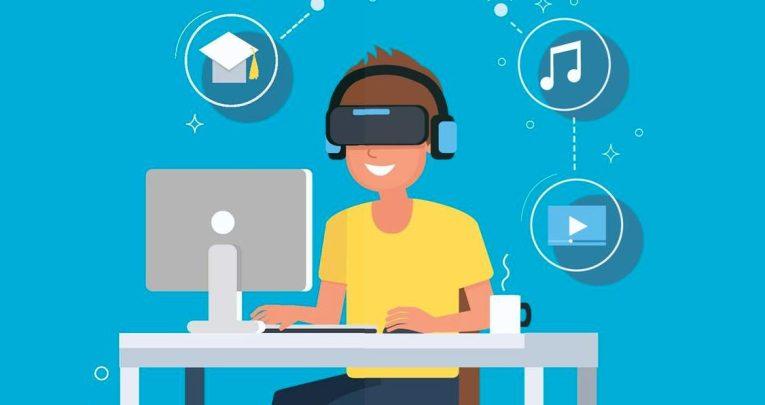Unlocking Classroom Innovation: Effective VR/AR Training Strategies for Teachers
In today’s fast-paced digital landscape, classroom innovation is more crucial than ever. Immersive technologies such as Virtual Reality (VR) and Augmented Reality (AR) are rapidly transforming how educators engage students and deliver content. But to harness teh full potential of VR and AR in education,teachers need tailored training strategies that build confidence and foster creativity. This comprehensive guide explores the most effective VR/AR training strategies for teachers, their benefits, and practical tips to unlock innovative, immersive learning experiences.
Why VR and AR Matter in Today’s Classrooms
Virtual Reality and Augmented Reality are reshaping educational spaces by making learning interactive, engaging, and experiential. These technologies:
- Allow students to explore complex concepts through immersive simulations.
- Support differentiated instruction by accommodating diverse learning styles.
- Enhance motivation and participation by providing memorable hands-on experiences.
- Bridge the gap between theoretical knowledge and real-world submission.
Despite these advantages, many educators face hurdles integrating VR/AR due to unfamiliarity or lack of technical skills. This underscores the need for effective VR/AR training strategies for teachers.
The Core Benefits of VR/AR Training for Teachers
- Boosts Teacher Confidence: Structured training removes fear of technology,enabling teachers to lead transformative lessons.
- Encourages Pedagogical Innovation: Exposure to immersive tech inspires new approaches to curriculum design and assessment.
- promotes Digital Literacy: Teachers gain valuable digital skills for the modern classroom.
- Supports Student Outcomes: Well-trained teachers can leverage VR/AR to improve engagement and retention.
- Fosters Collaborative Learning: Shared experiences in virtual environments enhance dialog and teamwork among students and faculty.
Effective VR/AR Training Strategies for Teachers
Prosperous implementation of VR/AR in education hinges on strategic, hands-on professional development.Here’s how to start:
1. Start with Foundational Workshops
- Introductory Sessions: Begin with basic VR/AR concepts, devices, and applications tailored to educators.
- Device Demos: Provide hands-on experience with popular tools such as oculus Rift, Google Cardboard, or Merge Cube.
- Interactive Tutorials: Use guided simulations and AR-enabled lesson walkthroughs to build familiarity and excitement.
2.Implement Collaborative Learning Communities
- Peer-Led Groups: encourage teachers to share ideas, success stories, and challenges in small groups or via online forums.
- Mentorship Programs: Pair tech-savvy teachers with beginners for mutual learning and support.
- Regular Check-Ins: Use collaborative platforms (e.g., Microsoft Teams, google Classroom) to discuss progress and curate resources.
3. Integrate Real-World Education Scenarios
- Lesson Plan Development: Train teachers to design VR/AR-enhanced lesson plans tied to curriculum standards.
- Scenario-based Training: Practice classroom management and troubleshooting in simulated virtual classrooms.
- Subject-Specific Modules: Offer targeted sessions for STEM, humanities, and the arts, showcasing discipline-specific VR/AR tools.
4. Provide Ongoing Support & Resources
- Resource Libraries: Supply curated lists of free and paid VR/AR educational apps, lesson plans, and how-to guides.
- Tech Support: Establish a helpdesk or designated point of contact for troubleshooting issues and providing recommendations.
- Continuous Professional Development: Offer advanced workshops and certification programs for enthusiastic adopters.
5. Foster a Culture of Experimentation
- Encourage Feedback: Create safe spaces for teachers to try, fail, and iterate on new VR/AR lesson ideas.
- Pilot Programs: Support small-scale implementation before school-wide rollouts,using focus groups for assessment.
- showcase Success: Recognise and celebrate innovative classroom projects to inspire others.
Practical Tips for Successful VR/AR Integration
- Align with Curriculum Goals: Ensure every VR/AR activity has a clear learning outcome connected to educational standards.
- Start Small: Introduce one new VR/AR tool at a time to master its use before expanding.
- Promote Inclusivity: Choose technologies that are accessible for all students, including those with special needs.
- Monitor Student Feedback: Regularly survey students on engagement and learning efficacy to guide adjustments.
- Stay Curious: Stay informed about emerging VR/AR trends in education by joining webinars, reading edtech blogs, and networking with other educators.
Real-World Case Studies: VR/AR in the Classroom
Case Study 1: Virtual Field Trips at Maplewood Middle School
Maplewood Middle School implemented Google Expeditions to take students on virtual field trips around the globe. Teachers trained in VR used step-by-step guides and peer-sharing workshops.The result? Students reported higher engagement in geography and science, and teachers gained newfound confidence in blending technology and pedagogy.
Case Study 2: Augmented Chemistry labs at Eastwood High
At Eastwood High, science faculty used AR applications like MEL Chemistry to create interactive, 3D chemical models.Targeted professional development sessions equipped teachers to seamlessly integrate AR lessons into the lab. The initiative led to increased student comprehension and enthusiasm for STEM subjects.
Case Study 3: VR Storytelling in Literature Classes
Literature teachers piloted immersive storytelling projects using CoSpaces Edu to recreate scenes from classic novels. Training focused on narrative design and technical skills. The resulting projects empowered students to express creativity and deepened text analysis.
Firsthand Experience: A Teacher’s Journey with VR/AR
“As a history teacher, I was initially overwhelmed by the technical aspects of VR. After attending school-led workshops and experimenting with virtual museum tours, I discovered that my students were noticeably more enthusiastic and participatory. The change reinvigorated my teaching practice and opened endless possibilities for both me and my students.”
— Ms. E.Carlson, Grade 9 Social Studies
Conclusion
Unlocking classroom innovation with effective VR/AR training strategies for teachers is an investment in the future of education. When teachers are empowered with the right skills and resources,they can bring lessons to life,ignite student curiosity,and foster deeper learning. By starting with foundational hands-on training, promoting collaboration, and providing continuous support, schools enable teachers to lead the way in immersive, technology-driven pedagogy.
The journey to successful VR/AR integration is ongoing—and every step educators take brings classrooms closer to delivering truly transformative learning experiences. Stay inspired, stay connected, and continue to explore the opportunities that immersive technologies offer for educational excellence.

